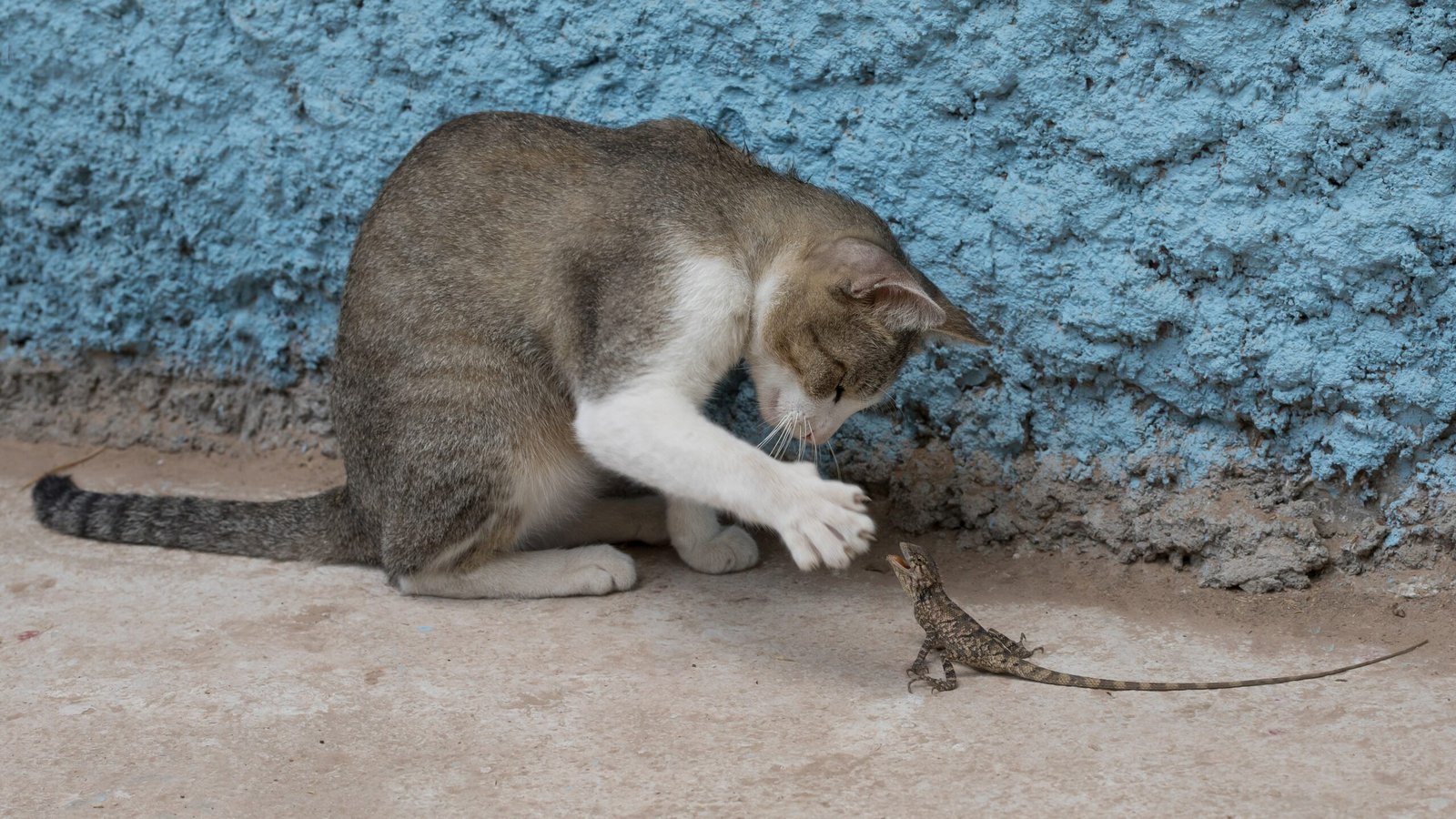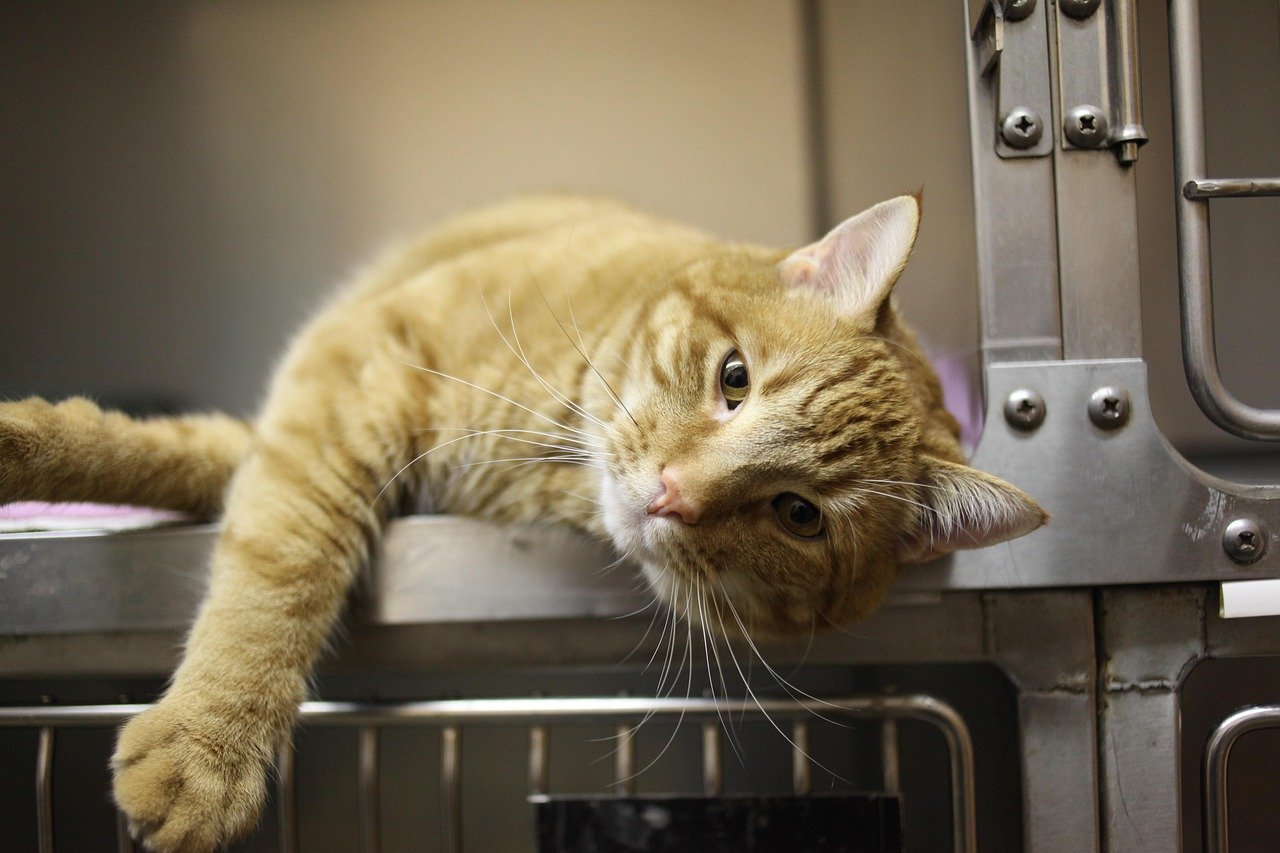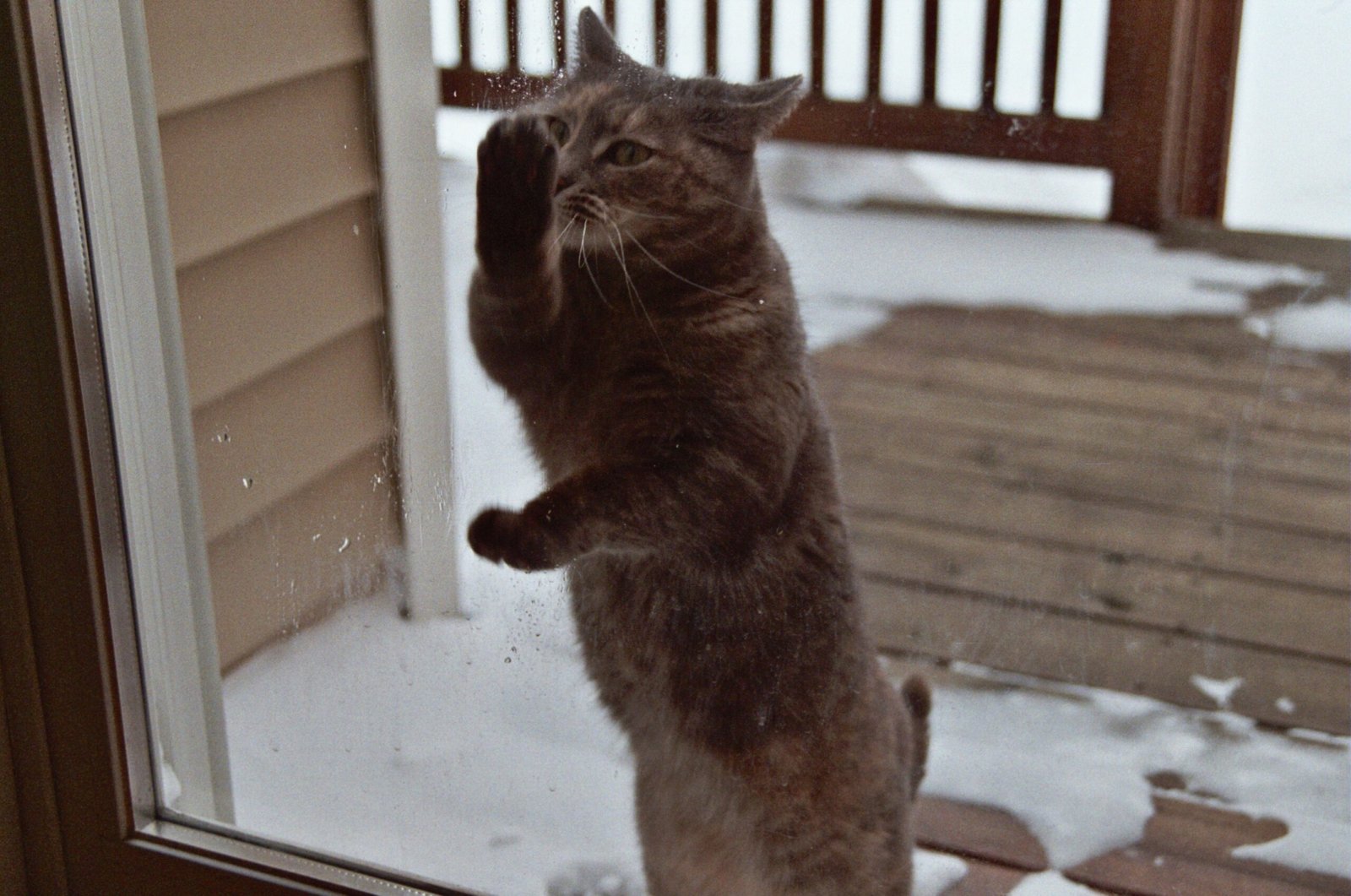Have you ever locked eyes with a cat that seems more like a shadow than a companion? Maybe it’s the stray you just welcomed home or a rescue hiding beneath the bed, trembling at every sound. The journey from a guarded, anxious feline to a grounded, confident companion is nothing short of magical. It’s a path paved with patience, understanding, and the smallest gestures of trust. If you’re ready to watch a fearful cat blossom into a loving member of your family, you’re in the right place. Let’s uncover the secrets to helping a cat transform from wary to wonderfully grounded.
Understanding Why Cats Become Guarded

Cats often become guarded due to a mix of nature and nurture. A traumatic past, a sudden change in environment, or even a lack of early socialization can all play a part. Imagine being dropped into a new world with no familiar faces—fear would come naturally. For some cats, even genetics can make them more sensitive or shy. Recognizing that a cat’s guardedness is rarely their fault is important. It’s not about stubbornness or disobedience; it’s about survival. When you see their behavior through gentle eyes, it’s easier to respond with compassion rather than frustration.
Creating a Safe Space

Building a sanctuary for your cat is the first step in helping them feel safe. Choose a quiet room where they can retreat without being disturbed by loud noises or frequent foot traffic. Place a cozy bed, a litter box, and a few toys in the area. Make sure there are hiding places like boxes or covered beds—these give your cat control over their exposure. Avoid forcing them out; let them explore at their own pace. The more secure their environment, the more likely they are to begin venturing out. This safe space acts as their home base, a comforting anchor in a world that may feel overwhelming.
Respecting Their Boundaries

Just like people, cats need their personal space. If your new cat darts away or flattens their ears, it’s their way of saying, “I need space.” Forcing interaction can set back progress and damage trust. Instead, sit quietly nearby and let them observe you. Try reading a book or working on a laptop in their presence. Your calm, non-threatening behavior will speak volumes. Over time, curiosity often gets the better of even the most reserved cats. Allowing them to come to you on their own terms is one of the most powerful gifts you can give.
Using Calming Scents and Sounds

Certain scents and sounds can work wonders for anxious felines. Products that mimic cat pheromones, like diffusers or sprays, can create a feeling of safety. Soft, gentle music or white noise can mask startling external sounds. Avoid loud or sudden noises, which can startle and reinforce a cat’s wariness. You can also try placing an item of your clothing in their space so they get used to your scent. These small sensory adjustments can make a big difference in how quickly a cat relaxes. Creating a peaceful atmosphere tells your cat that the world isn’t so scary after all.
Establishing a Predictable Routine

Routine is a cat’s best friend. Feeding, playtime, and even cleaning the litter box at consistent times each day builds trust. The predictability helps your cat understand what to expect, reducing anxiety and uncertainty. When your feline knows that breakfast always arrives after sunrise or that it’s playtime every afternoon, they feel more in control. Even small rituals, like saying a soothing phrase before feeding, can become comforting cues. Over time, these routines become the backbone of your relationship and encourage your cat to feel more grounded in their new world.
The Power of Play

Play is more than just fun—it’s therapy in disguise for shy cats. Wand toys or feather teasers allow for interaction at a distance, giving cautious cats the chance to engage without feeling threatened. Play ignites their natural instincts and provides a healthy outlet for stress. It also helps build positive associations with your presence. Start with slow, gentle movements and let your cat set the pace. As their confidence grows, you’ll notice their body language relax and their curiosity increase. Playtime can be the bridge from fear to friendship.
Offering Treats and Positive Reinforcement

Food is a universal language, and treats can work wonders in building trust. Offer high-value treats by placing them near your cat, then gradually move closer as they become more comfortable. Reward even the smallest steps of bravery, like emerging from hiding or approaching you. Keep your tone cheerful and encouraging. Never use food as a bribe or to force interaction—let it be a reward for voluntary curiosity. Over time, your cat will associate you with positive experiences, making each encounter less intimidating.
Reading Cat Body Language

Understanding your cat’s silent signals is key to supporting their transition. Look for signs like flattened ears, a tucked tail, or dilated pupils—these indicate stress or fear. On the flip side, slow blinking, relaxed posture, and a gently swaying tail show comfort. Respond to their cues by adjusting your behavior. If they seem overwhelmed, back off and give them space. Celebrating their moments of relaxation, however small, can reinforce positive feelings. Learning to “speak cat” helps you become the calm, reassuring presence your feline needs.
Building Trust With Slow Movements

Quick, sudden motions can send a guarded cat running. Move slowly and deliberately around your cat, avoiding direct eye contact which can feel threatening. Extend your hand gently, palm down, and allow your cat to approach if they wish. Try sitting on the floor to appear less intimidating. Even the act of standing up can seem monumental to a fearful cat, so be mindful of your presence. The more predictable and gentle your actions, the quicker trust will grow. Remember, every cat has their own timeline—patience is your greatest ally.
Introducing Other Pets Carefully

If you have other animals at home, take introductions slowly. Start by keeping your new cat separated and allowing them to sniff each other under a door. Gradually increase their exposure with supervised visits. Watch closely for signs of stress or aggression, and never force interaction. Offering treats and praise to both the existing pet and the newcomer can help create positive associations. Over time, many cats adjust and even form strong bonds with other animals. The goal is to make the transition as smooth and stress-free as possible for everyone involved.
Encouraging Exploration at Their Own Pace

After your cat feels comfortable in their safe space, open the door and let them explore the rest of your home. Don’t pick them up or push them into new areas—let curiosity lead the way. You might leave a trail of treats or toys to entice gentle exploration. Keep other pets and children away from the area during these first ventures. If your cat retreats, don’t worry; they’ll try again when they’re ready. Every step outside their comfort zone is a victory, no matter how small it seems.
Handling Setbacks and Regression

Progress with a shy cat isn’t always linear. A loud noise, an unexpected visitor, or even a new scent can cause your cat to retreat. This is normal and not a sign of failure. Return to basics: reinforce their safe space, maintain routines, and offer gentle encouragement. Don’t punish or scold; instead, show extra patience during these periods. Each setback is a chance to renew your commitment and understanding. Celebrate the small wins and remember that growth often comes in waves.
Speaking Softly and Using Gentle Touch

Your voice can be a powerful tool for reassurance. Speak softly, using a calm and soothing tone. Avoid shouting or using a harsh voice, which can reinforce fear. When your cat is ready for touch, use slow, gentle strokes on areas they enjoy, like under the chin or behind the ears. Always let your cat initiate contact. Respecting their boundaries and responding with kindness creates positive associations. Over time, your gentle presence becomes a source of comfort rather than anxiety.
Providing Vertical Space

Cats feel safer when they can observe their surroundings from a high vantage point. Offering cat trees, shelves, or window perches allows your cat to watch the world go by without feeling exposed. Vertical space provides both comfort and entertainment, especially in multi-pet households. It also gives your cat a sense of control, which is vital for reducing anxiety. Even a simple cardboard box placed on a table can serve as a throne for a wary feline. The more options you provide, the more empowered your cat will feel.
Introducing Enrichment Activities

Mental stimulation is just as important as physical comfort. Puzzle feeders, interactive toys, and scent games can keep your cat engaged and distract them from anxiety. Rotate toys regularly to maintain interest. Hide treats around the room to encourage your cat to explore and use their natural hunting instincts. Enrichment activities help build confidence and reduce boredom, which can sometimes manifest as fearfulness. A busy mind often leads to a happier, more grounded cat.
Involving the Whole Family

Consistency from every household member is key to your cat’s progress. Teach children and other adults how to interact respectfully with your cat. Establish house rules, like not chasing or picking up the cat without permission. Encourage everyone to participate in routines like feeding or playtime. The more your cat sees friendly faces behaving predictably, the more likely they are to let their guard down. A united, gentle approach ensures that your cat feels safe with everyone in the home.
Monitoring Health and Wellness

Sometimes, a cat’s guarded behavior has a medical root. Pain, illness, or discomfort can make even the most social cat hide or lash out. Schedule a veterinary check-up to rule out health issues, especially if you notice changes in appetite, energy, or grooming habits. Keeping up with vaccinations, parasite control, and regular check-ups sets your cat up for success. A healthy cat is more likely to feel safe and confident. Never underestimate the link between physical and emotional well-being.
Celebrating Small Victories

Progress with a guarded cat is measured in tiny milestones. Maybe it’s the first time they eat in your presence or allow a gentle pet. Celebrate these moments with quiet praise, treats, or a favorite toy. Keep a journal to track improvements—it’s easy to forget how far you’ve come. Sharing these victories with friends or online cat communities can also be encouraging. Each step forward, no matter how small, is proof that trust is growing. Cherish the journey, not just the destination.
Seeking Professional Help When Needed

Sometimes, despite your best efforts, a cat’s anxiety persists. If you’re feeling stuck or overwhelmed, don’t hesitate to consult a feline behaviorist. These professionals can offer personalized strategies and identify underlying issues you might miss. Your veterinarian can also provide advice or recommend calming supplements if needed. Seeking help isn’t a sign of failure—it’s a commitment to your cat’s well-being. Together, you and the experts can create a plan that helps your feline friend feel truly at home.
Staying Patient and Hopeful

Patience is the most important ingredient in helping a cat transition from guarded to grounded. Progress can be slow, and setbacks are common, but every effort brings you closer to a trusting relationship. Keep your expectations realistic and celebrate every achievement. Remind yourself that your patience and love are transforming your cat’s world. As your feline’s confidence grows, so too will your bond. The transformation may be gradual, but the rewards are heartfelt and lasting.
Embracing the Unique Journey

Every cat’s journey from guarded to grounded is as unique as a snowflake. Some may blossom in days, while others take months or even years. Respecting your cat’s individual pace is the ultimate expression of love. The quiet moments, the tentative blinks, and the first purrs are all part of a remarkable transformation. In the end, your willingness to walk beside your cat through fear and uncertainty is its own kind of magic. Isn’t it amazing what patience and love can do?
Hi, I’m Bola, a passionate writer and creative strategist with a knack for crafting compelling content that educates, inspires, and connects. Over the years, I’ve honed my skills across various writing fields, including content creation, copywriting, online course development, and video scriptwriting.
When I’m not at my desk, you’ll find me exploring new ideas, reading books, or brainstorming creative ways to solve challenges. I believe that words have the power to transform, and I’m here to help you leverage that power for success.
Thanks for stopping by, Keep coming to this website to checkout new articles form me. You’d always love it!






